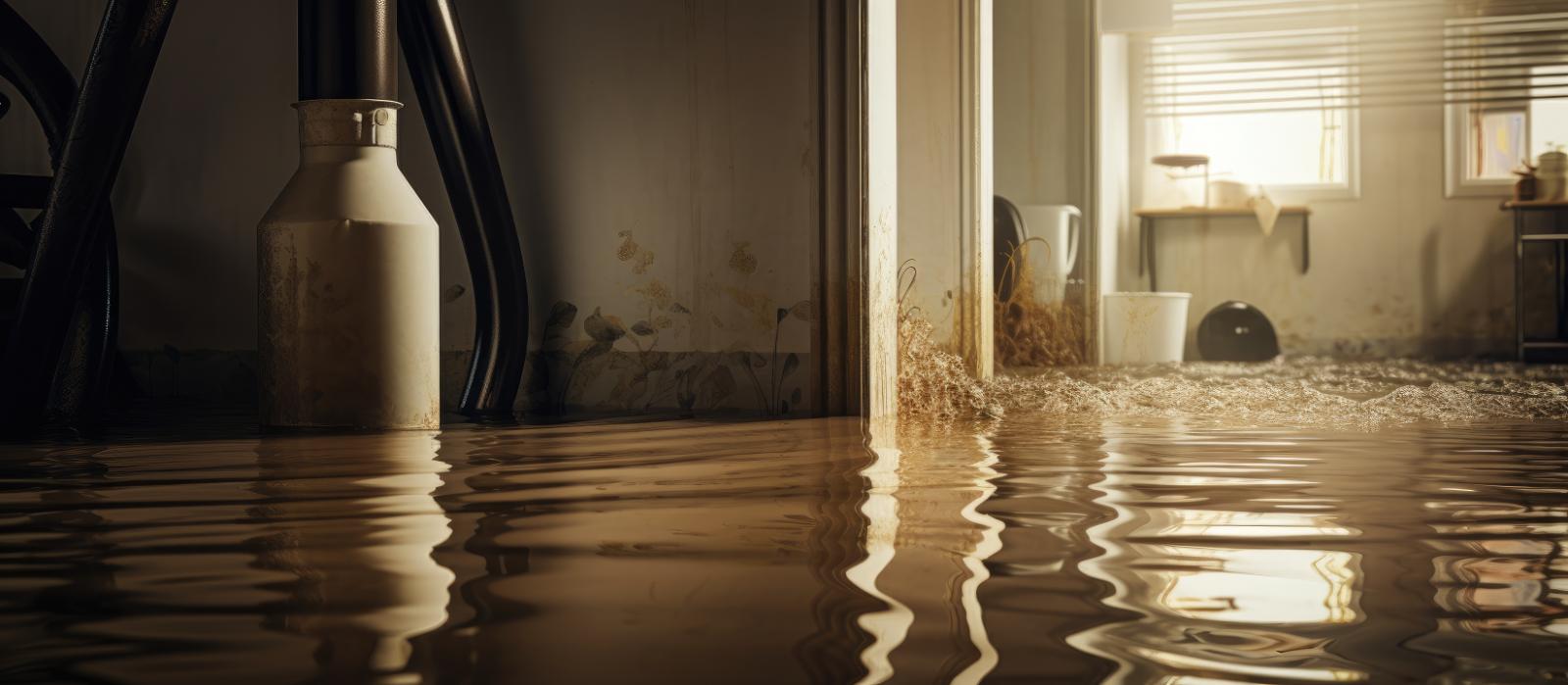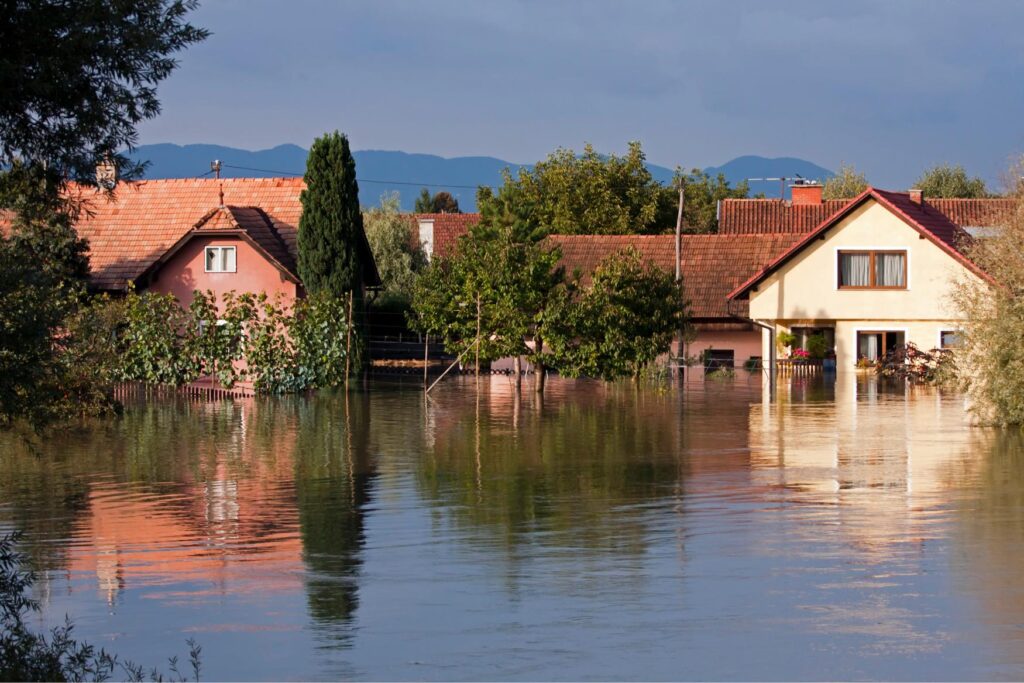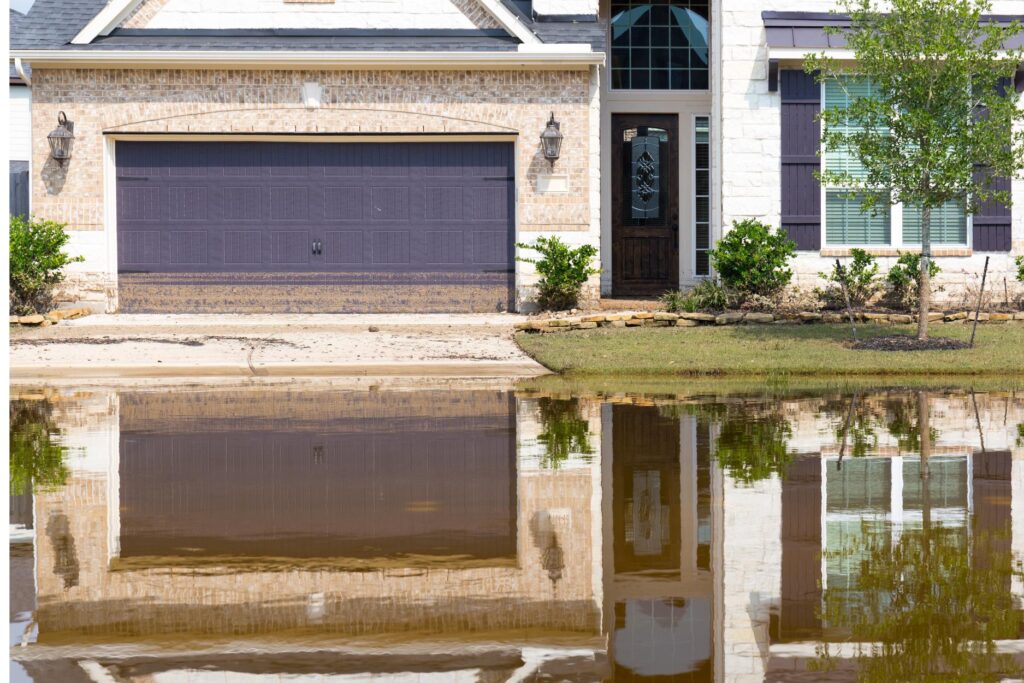Contents
When safeguarding your home, the unseen threat of hidden water leaks can wreak havoc if left undetected. Imagine the potential damage lurking beneath the surface, slowly deteriorating your property without notice. By understanding the subtle clues and employing proactive measures, you can protect your home from the silent menace of water leaks. Discover the key strategies and tools that can help you maintain a leak-free environment and ensure the longevity of your cherished abode.
Key Takeaways
- Regular inspections prevent costly damages and conserve water.
- Musty odors signal hidden leaks and potential mold growth.
- High water bills indicate hidden leaks requiring immediate attention.
- Utilize tools like water leak sensors for early detection.
- Professional leak detection services offer accurate and targeted repairs.
Importance of Water Leak Detection
Detecting water leaks is crucial in preventing costly damages and conserving water resources. Leak prevention is a fundamental aspect of maintaining the integrity of your home and safeguarding against potential water damage. Water damage resulting from leaks can lead to structural issues, mold growth, and even compromise the safety of your living environment. By actively seeking out and addressing leaks promptly, you can mitigate these risks and ensure the longevity of your property.
Implementing a proactive approach to leak prevention involves regularly inspecting areas prone to leaks, such as plumbing fixtures, appliances, and water supply lines. Monitoring your water bill for unexpected increases can also indicate a hidden leak that requires immediate attention. Engaging in routine maintenance, such as checking for dampness or discoloration on walls and ceilings, can aid in the early detection of leaks before they escalate into more significant problems.
Conserving water resources is another crucial benefit of effective leak prevention. Undetected leaks can result in the wastage of hundreds of gallons of water, impacting both the environment and your utility bills. By taking the initiative to detect and repair leaks promptly, you contribute to the preservation of water and reduce unnecessary water consumption.
Embracing leak detection as a proactive measure protects your home from water damage and aligns with sustainable practices that benefit the community at large.
Common Signs of Hidden Leaks
You should pay close attention to visual water stains on walls or ceilings, as they can indicate a hidden leak within your plumbing system.
Additionally, be wary of any musty odors that persist in your home, as they might be a sign of mold growth due to water leakage.
Lastly, keep an eye on your water bills for any sudden spikes, as this could be a clue that there’s a hidden leak causing water wastage.
Visual Water Stains
To identify hidden water leaks, pay close attention to visual water stains on walls, ceilings, or floors, as they often indicate underlying plumbing issues. These stains may appear as discolored patches, water rings, or streaks in areas near pipes or fixtures.
Ignoring these signs may lead to severe water damage and potential mold growth in your home. Implementing preventive maintenance by regularly inspecting these areas can help you catch leaks early and avoid costly repairs.
If left unchecked, water stains can weaken structures, causing paint to peel, drywall to warp, and even compromising the integrity of the building. Home insurance may not always cover damage resulting from neglected leaks, emphasizing the importance of addressing water stains promptly.
Mold growth due to hidden leaks can pose serious health risks to you and your family. By promptly investigating and repairing visual water stains, you can safeguard your home from extensive damage and maintain a healthy living environment.
Musty Odor Detection
Pay attention to musty odors in your home, as they can often be a common sign of hidden water leaks. If you notice a persistent musty smell, especially in areas like basements, bathrooms, or near sinks, it could indicate the presence of mold growth resulting from damp walls caused by hidden leaks. Mold thrives in moist environments, making it a key indicator of water leaks within your home.
When water seeps into the walls due to leaks, it creates the perfect conditions for mold to grow. The combination of moisture and organic materials in the walls provides an ideal breeding ground for mold spores, leading to the musty odor you may detect.
If left unaddressed, mold growth can worsen the smell and pose health risks to you and your family. To prevent further damage and potential health hazards, it’s crucial to investigate musty odors promptly and address any underlying water leaks causing damp walls.
Early detection and repair can help mitigate the spread of mold and protect your home from extensive damage.
High Water Bills
Detecting hidden leaks can often be indicated by unusually high water bills, a common sign that warrants immediate attention and investigation. If you notice a sudden spike in your water expenses without a corresponding increase in usage, it could be a red flag for a hidden leak within your plumbing system.
Monitoring your water bills regularly is crucial for early detection of leaks, promoting water conservation, and preventing potential damage to your home.
Proactive plumbing maintenance is key to addressing high water bills caused by hidden leaks. Conduct periodic checks on your faucets, toilets, and visible pipes to ensure there are no leaks present. Additionally, consider implementing DIY solutions such as installing leak detection devices or using dye tablets in your toilet tank to check for silent leaks.
Tools for Leak Detection
Utilize specialized tools designed for pinpointing hidden water leaks with precision and accuracy. When it comes to leak detection, having the right equipment is crucial. Whether you opt for a DIY approach or seek professional services, the tools used can make a significant difference in identifying and resolving water leaks promptly. Below is a table outlining some common leak detection tools and their functions:
| Leak Detection Equipment | Description |
|---|---|
| Water Leak Sensors | These devices can be placed near water-prone areas to detect any leaks and send alerts to your smartphone or a central system. |
| Acoustic Leak Detectors | These tools listen for the sound of water escaping from pipes underground or within walls, helping locate the source of the leak. |
| Infrared Cameras | Infrared technology can detect temperature changes caused by water leaks, making hidden leaks visible to the naked eye. |
| Moisture Meters | By measuring the moisture content in walls or floors, these meters can indicate areas where water may be escaping. |
| Pressure Testing Kits | These kits help assess the integrity of your plumbing system by pressurizing it to reveal any leaks through drops in pressure. |
Choosing the right combination of tools based on your specific needs can streamline the leak detection process and prevent potential water damage in your home.
Inspecting Water Fixtures
Check for any faucet drips by turning off all water sources and closely examining each faucet for any signs of leaking.
Additionally, inspect the seals on showerheads for any wear or damage that could lead to water leakage.
Properly maintaining and promptly fixing any issues with these water fixtures can help prevent hidden water leaks in your home.
Faucet Drip Check
To identify potential water leaks, begin by thoroughly inspecting all water fixtures for any signs of dripping or leaking. Faucet maintenance is crucial for water conservation and preventing water damage in your home.
Start by checking each faucet in your house. Turn off all other water sources and listen closely for any dripping sounds. Even a slow, steady drip can waste a significant amount of water over time. Inspect the base of the faucet, handles, and spout for any visible leaks or water buildup. Use a tissue or paper towel to dry the area completely before checking for new moisture after a few hours.
Additionally, check the water meter before and after a two-hour period when no water is being used to see if there’s any indication of water loss. Regularly inspecting your faucets and promptly addressing any leaks can save you money on your water bill and prevent potential water damage in your home.
Showerhead Seal Examination
Inspect the seal around your showerhead to ensure there are no signs of leaks or water seepage. Proper showerhead maintenance is crucial in preventing water damage to your home. A leaky faucet or a compromised showerhead seal can lead to mold growth and structural issues if left unchecked. Follow these steps to examine the showerhead seal effectively:
| Step | Procedure | Outcome |
|---|---|---|
| 1. Visual Inspection | Check for any visible cracks or gaps in the sealant. | Identifying potential areas of water seepage. |
| 2. Water Flow Test | Turn on the shower and observe for any drips around the seal. | Detecting immediate leaks during usage. |
| 3. Seal Replacement | If necessary, replace the seal to ensure a proper fit. | Preventing future water leaks and mold formation. |
Regularly monitoring your showerhead seal as part of your home maintenance routine can contribute significantly to water damage prevention. By staying attentive to these details, you can safeguard your home from the detrimental effects of leaks and mold growth.
Checking Water Meter for Leaks
When examining for water leaks, begin by focusing on the water meter as a crucial indicator of potential issues. Conducting a thorough water meter inspection is essential in detecting hidden leaks within your home.
To commence this process, ensure that all sources of water in your house are turned off, including faucets, appliances, and irrigation systems. Once everything is shut off, observe the water meter dial for any movement. Even the slightest motion when no water is being used can signify a leak.
Furthermore, to enhance leak detection techniques, record the current reading on the water meter and wait for about an hour without using any water. After the hour has passed, recheck the meter. If the reading has changed, this indicates a potential leak that requires further investigation.
In addition to monitoring the meter for leaks, inspect the area around the meter for any visible signs of water damage or pooling. Leaks near the water meter often indicate underground pipe issues that need immediate attention.
Monitoring Water Bills for Anomalies
Check your water bills regularly to detect any anomalies that may indicate hidden leaks in your plumbing system. Monitoring your water bills can provide valuable insights into your water usage patterns and help you identify any sudden spikes that could be attributed to hidden leaks.
Utilize Leak Detection Software: Consider using leak detection software to analyze your water bills and flag any irregularities that may point towards hidden leaks in your plumbing system.
Analyze Meter Readings: Compare your meter readings with the consumption indicated on your water bills. Significant discrepancies could be a sign of hidden leaks that need to be investigated promptly.
Track Water Usage Patterns: Keep track of your typical water usage patterns to quickly notice any deviations that might indicate a leak in your plumbing system.
Detect Hidden Leaks: Regularly monitoring your water bills for anomalies can help you proactively detect hidden leaks and address them before they escalate into costly issues.
Investigating Stained Surfaces
To uncover potential water leaks, delve into the investigation of stained surfaces, examining areas where discoloration or watermarks are present. Surface discoloration analysis is crucial in identifying hidden leaks that may lead to water damage within your home.
Begin by visually inspecting walls, ceilings, and floors for any signs of discoloration, peeling paint, or bubbling wallpaper. These can indicate moisture issues that require further investigation.
Next, conduct a moisture level assessment using a moisture meter to pinpoint the exact areas affected by water infiltration. Focus on areas near plumbing fixtures, such as sinks, toilets, and showers, as well as around windows and doors where leaks commonly occur. Elevated moisture levels suggest the presence of a leak that needs immediate attention.
To aid in hidden leak identification, pay close attention to musty odors or the sound of dripping water behind walls. These indicators can guide you to the source of the leak.
Addressing leaks promptly is essential for water damage prevention, as prolonged exposure to moisture can lead to structural issues and mold growth.
Using Thermal Imaging Technology
Utilize thermal imaging technology to efficiently detect hidden water leaks within your home by capturing temperature variations invisible to the naked eye. Thermal imaging cameras can be a valuable tool in identifying water leaks early on, preventing costly damages, and promoting energy efficiency through prompt repairs.
Here are some key benefits of using thermal imaging technology for leak detection:
Early Detection: Thermal imaging cameras can detect temperature differences caused by hidden water leaks, allowing you to address issues before they escalate.
Non-Invasive: Unlike traditional methods that may require extensive digging or damage to walls, thermal imaging is non-invasive, minimizing disruption to your home.
Energy Efficiency: By identifying and repairing water leaks promptly, you can prevent energy loss associated with water damage and maintain the overall energy efficiency of your home.
Building Maintenance: Incorporating thermal imaging into your building maintenance routine can help you proactively manage potential water leaks, preserving the structural integrity of your property.
With its ability to pinpoint hidden leaks quickly and accurately, thermal imaging technology offers a proactive approach to building maintenance, safeguarding your home, and promoting energy efficiency. By investing in this advanced technology, you can stay ahead of potential water leak issues and ensure the longevity of your property.
Hiring Professional Leak Detection Services
When faced with persistent water leaks that evade detection through thermal imaging, considering professional leak detection services becomes imperative for comprehensive assessment and resolution.
While DIY solutions and basic leak detection equipment can be useful for initial checks, they may not always pinpoint the exact location or extent of a hidden leak. Professional leak detection services offer advanced technology and expertise to accurately identify leaks without causing unnecessary damage to your property.
Leak detection professionals use specialized equipment such as acoustic sensors, infrared cameras, and moisture meters to detect leaks behind walls, under floors, or underground. These tools allow them to precisely locate the source of the leak, ensuring targeted repairs and preventing further water damage.
Additionally, professionals have the knowledge and experience to interpret the data gathered from these tools, providing a thorough assessment of the situation.
Final Thoughts
After following these steps to detect hidden water leaks in your home, you can rest assured that your property is safeguarded against potential water damage.
By being proactive and vigilant in monitoring for signs of leaks, you’re taking the necessary precautions to maintain the integrity of your home.
Imagine the peace of mind knowing that you have taken the necessary steps to protect your investment and ensure the safety of your loved ones.




